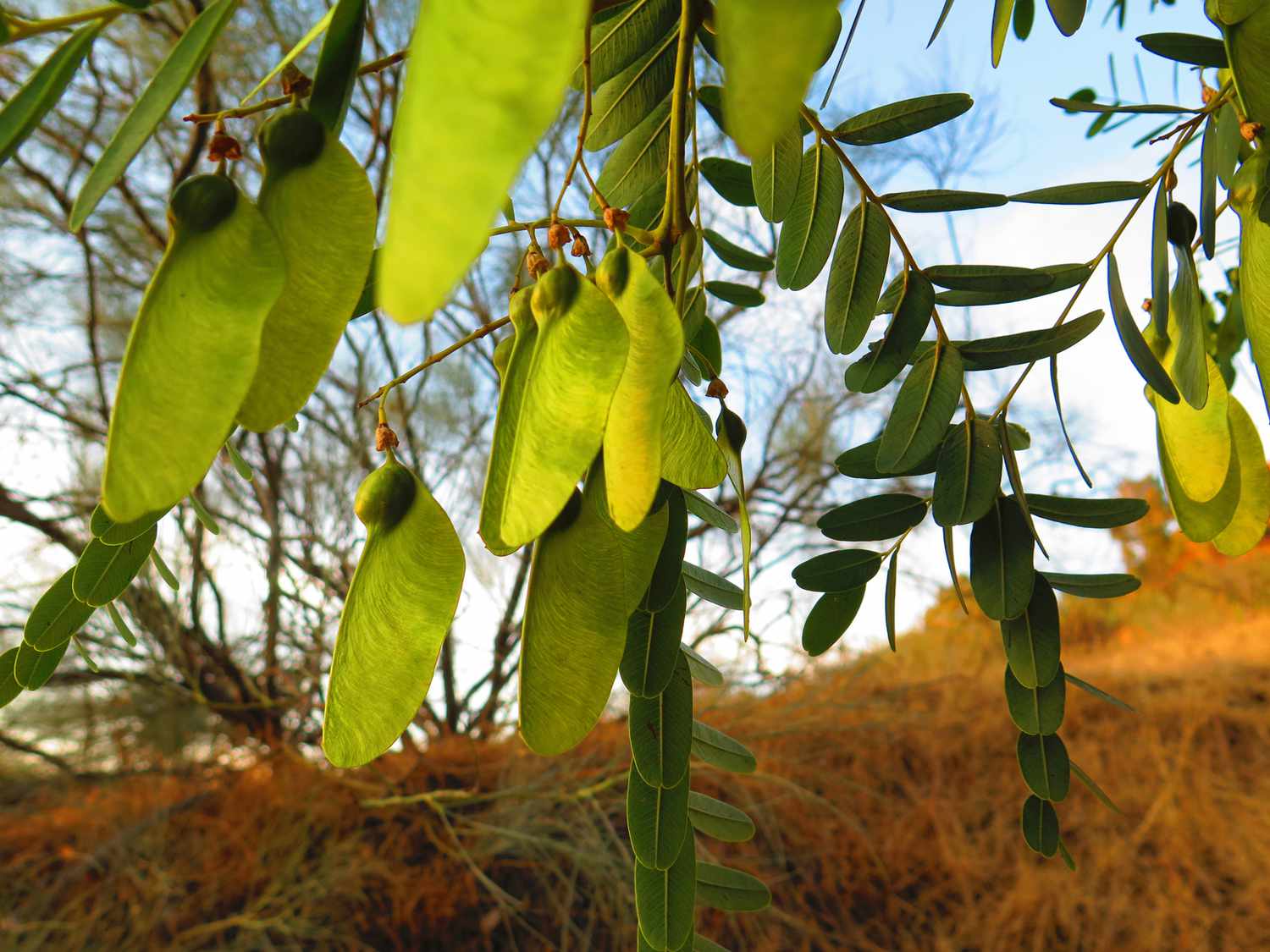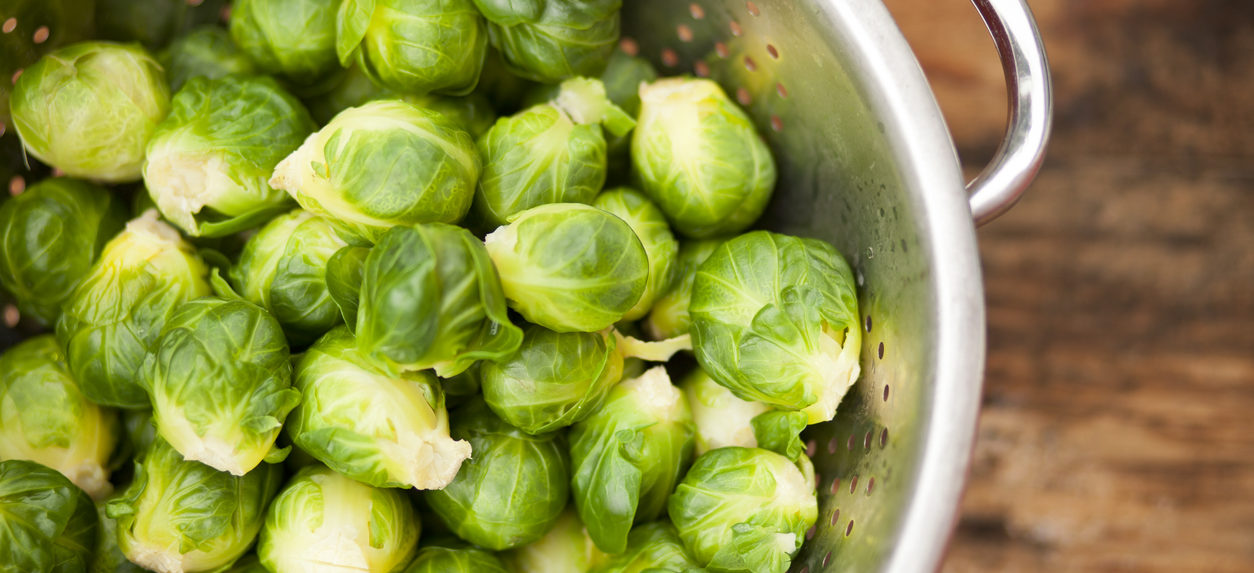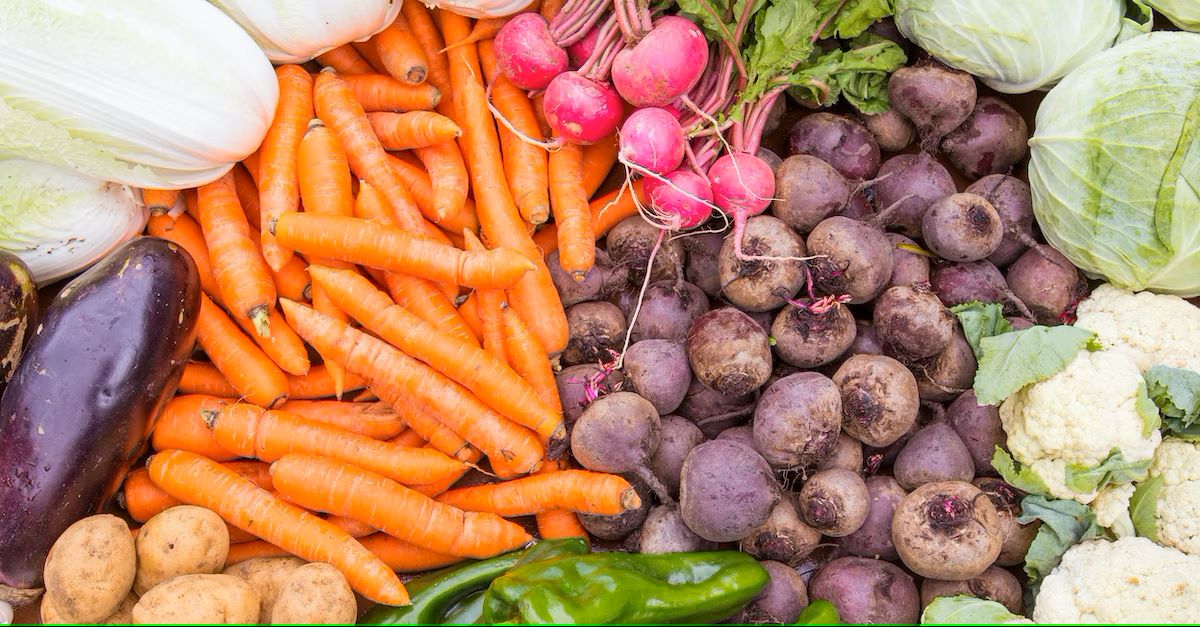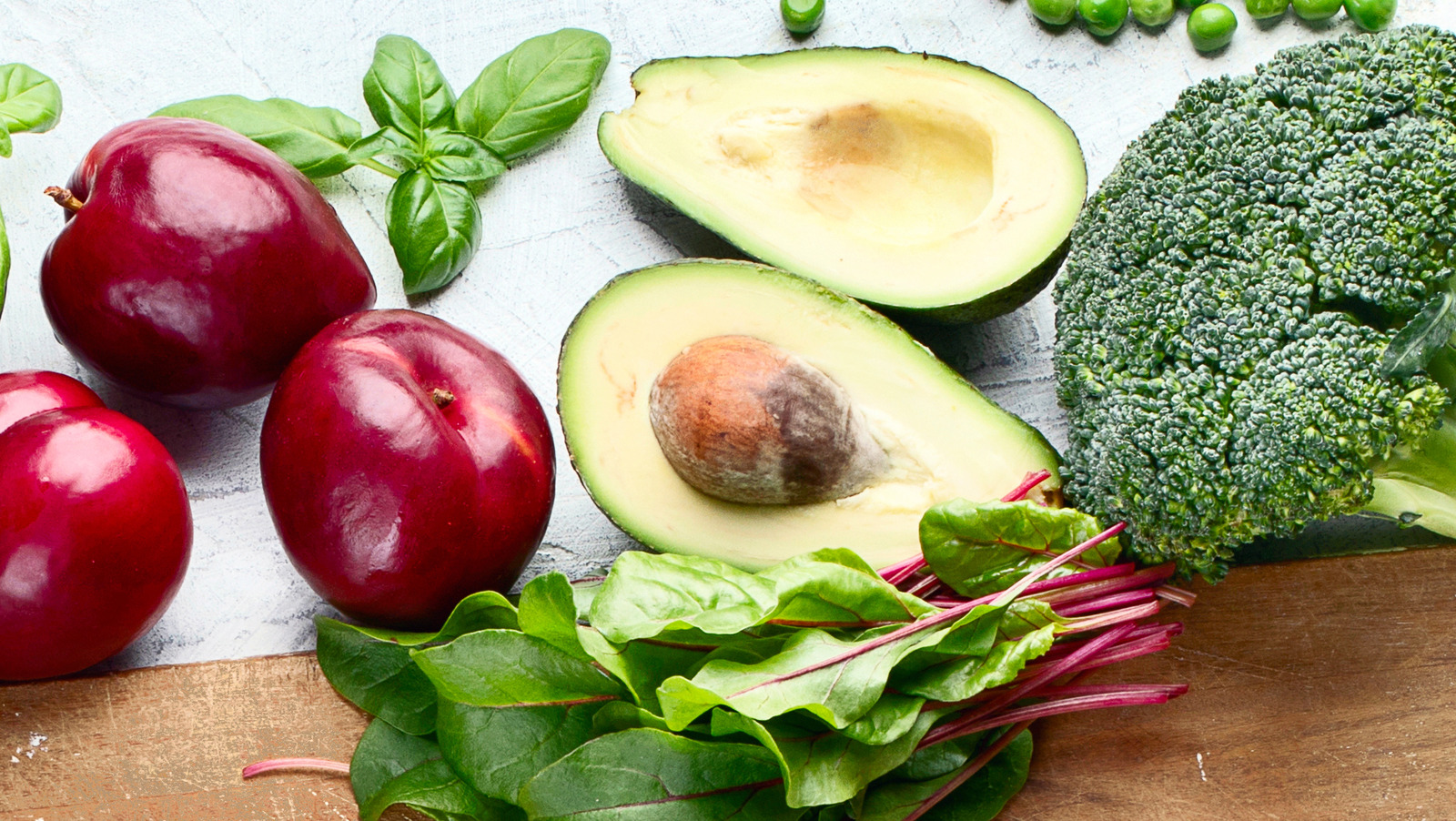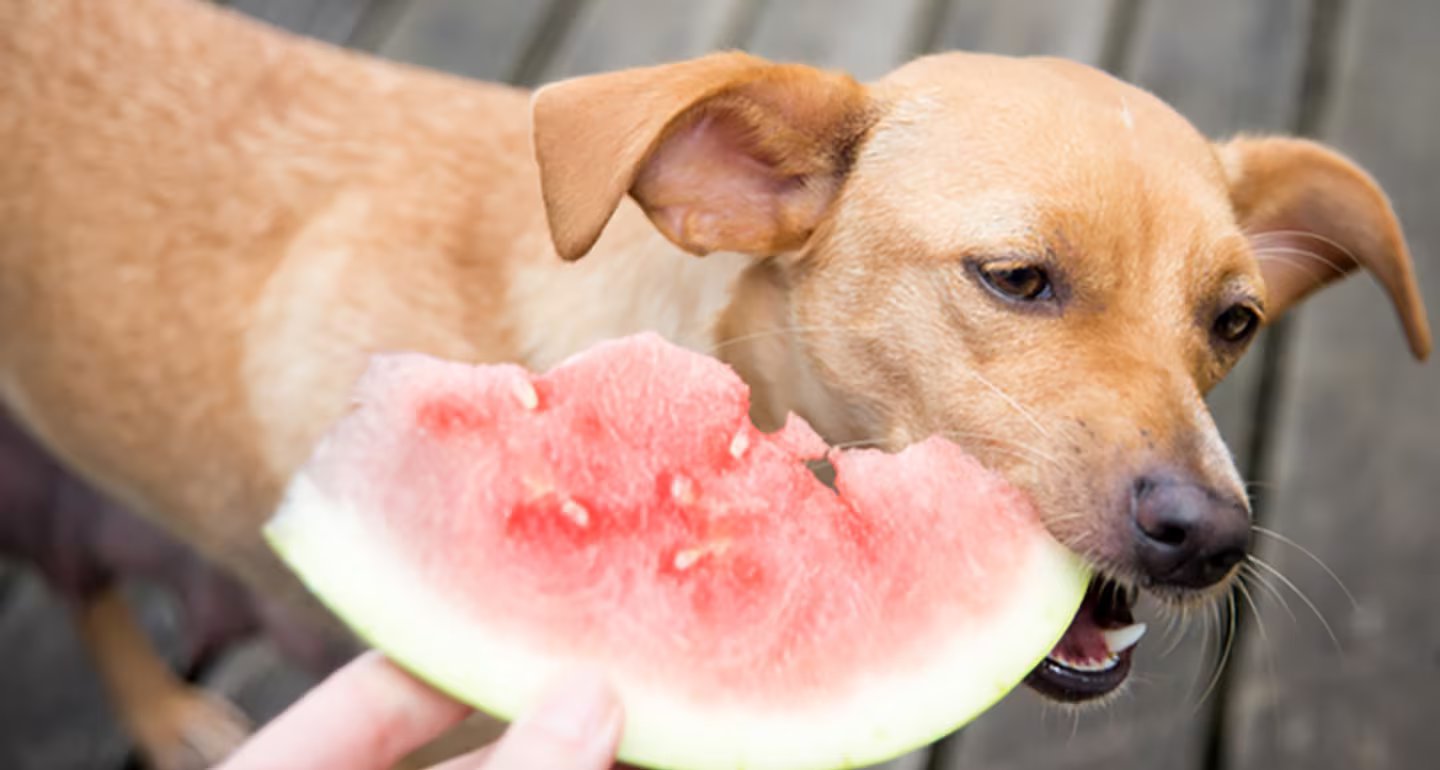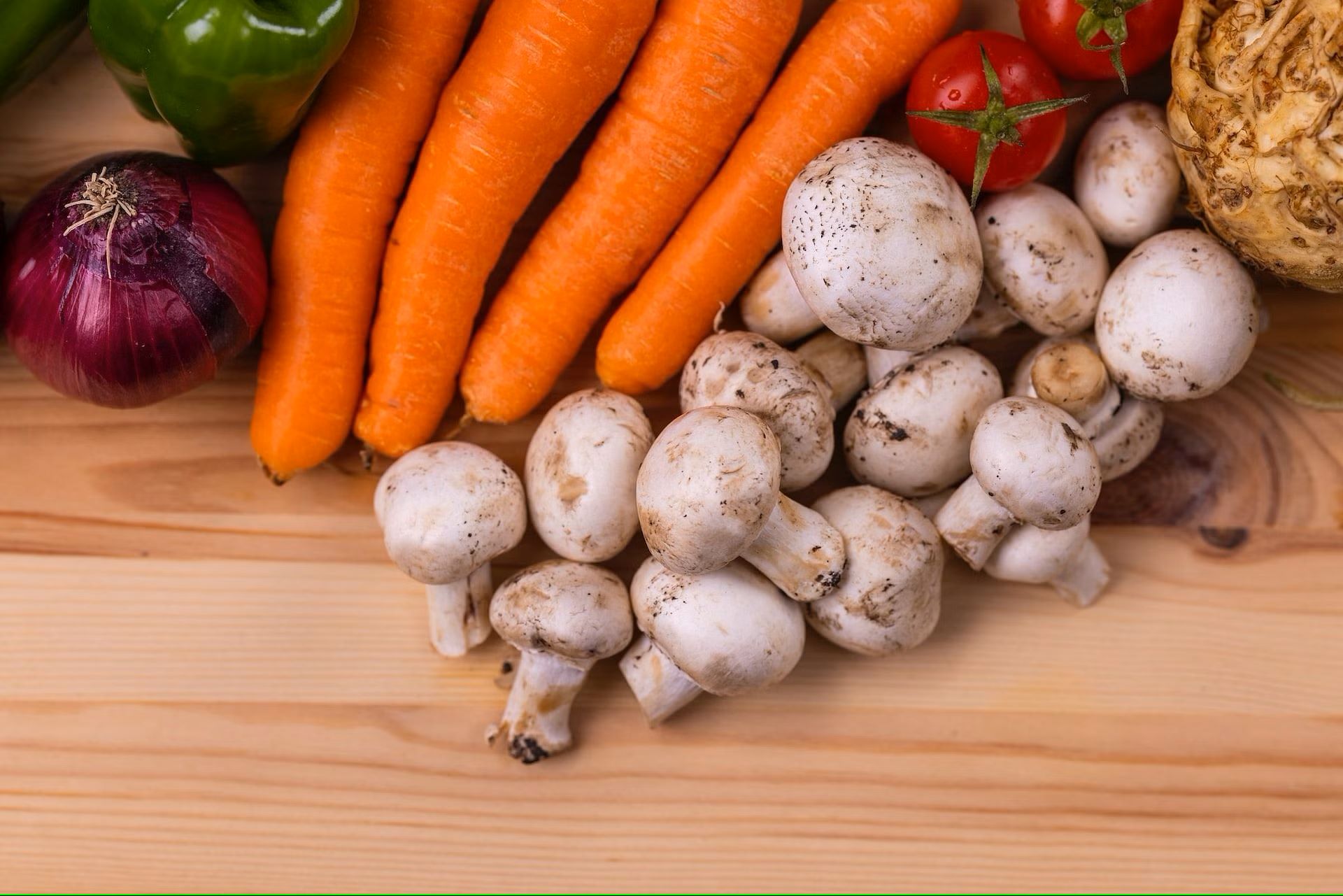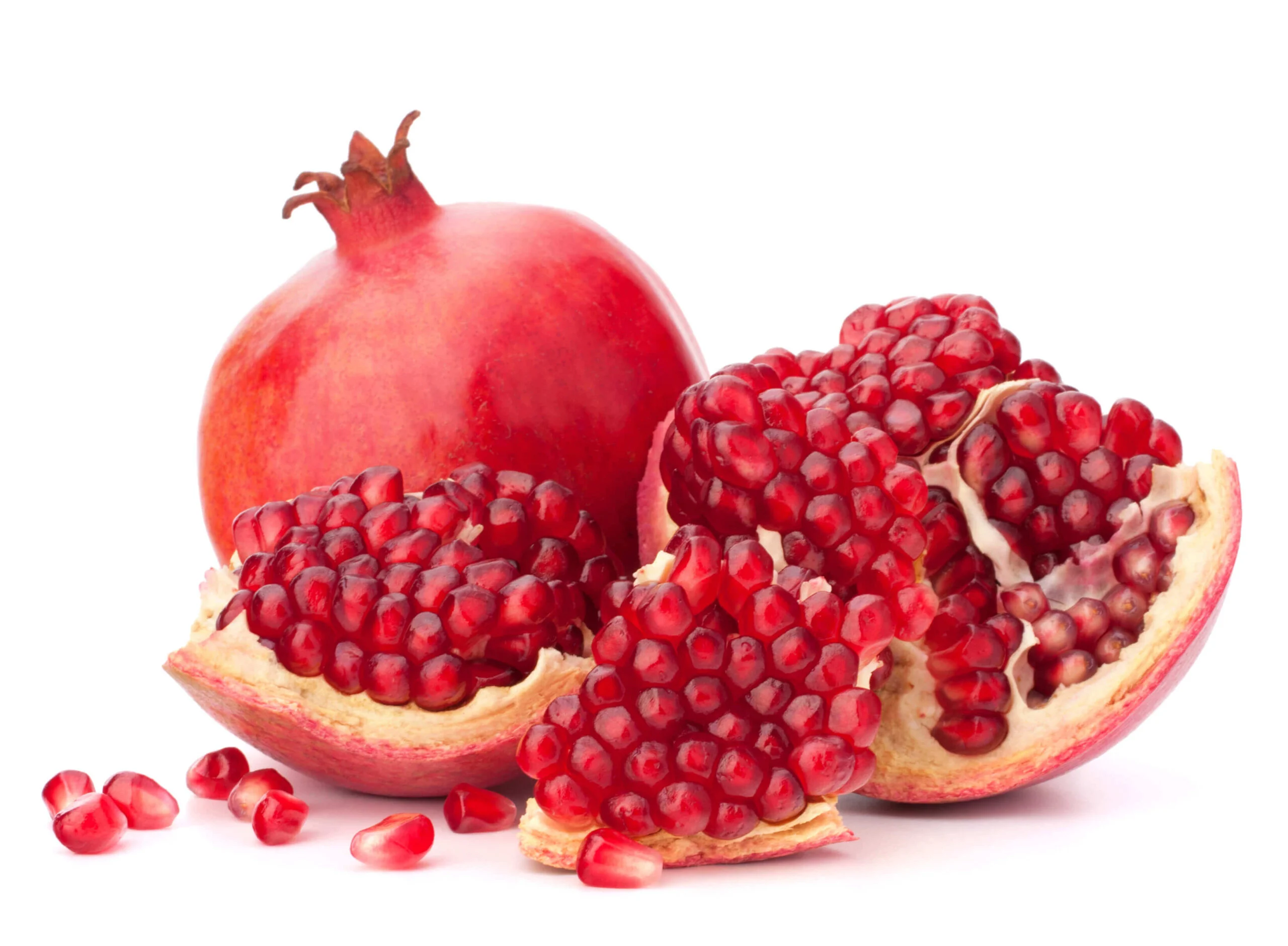Home>Types of Gardening>Edible Gardening>What Vegetables Have Seeds


Edible Gardening
What Vegetables Have Seeds
Modified: January 22, 2024
Learn about edible gardening and discover which vegetables have seeds that you can grow in your own backyard. Explore a variety of nutritious and delicious options in this comprehensive guide.
(Many of the links in this article redirect to a specific reviewed product. Your purchase of these products through affiliate links helps to generate commission for Chicagolandgardening.com, at no extra cost. Learn more)
Table of Contents
Introduction
Welcome to the fascinating world of edible gardening! If you have a green thumb and a passion for growing your own food, you’re in for a treat. One of the joys of cultivating your own fruits and vegetables is the ability to harvest the seeds and propagate future plants. In this article, we will explore the diverse range of vegetables that have seeds, providing you with insight into the wonderful world of edible gardening.
When it comes to gardening, it’s important to understand the distinction between vegetables that have seeds and those that don’t. Many common vegetables, such as tomatoes, cucumbers, peppers, and squash, produce seeds that can be harvested and used for future planting. These seeds not only ensure a continuous supply of fresh produce but also allow you to experiment with different varieties and flavors.
However, not all vegetables produce large, easily recognizable seeds. Some, like spinach, lettuce, kale, and radishes, have tiny seeds that might require a more delicate touch when it comes to harvesting and saving for future use. Nevertheless, the effort is well worth it, as these vegetables provide a wide range of nutrients and flavors to enhance your culinary journey.
Edible gardening is a fulfilling and sustainable practice that allows you to connect with nature and understand the process of food production from start to finish. By nurturing a seed into a thriving plant, you gain a sense of accomplishment and a deeper appreciation for the food that ends up on your table.
So, whether you’re an experienced gardener or a beginner just dipping your toes into the world of edible gardening, this article will serve as a comprehensive guide to vegetables with seeds. Get ready to discover the wonders that await as we delve into the world of tomatoes, cucumbers, peppers, squash, and many more!
Understanding Vegetables with Seeds
Before we dive into the specifics of vegetables with seeds, let’s take a moment to understand why seeds are so important in the world of gardening. Seeds are the reproductive structures of plants, containing all the genetic information needed to grow a new plant. When provided with the right conditions including soil, water, sunlight, and nutrients, seeds germinate and give rise to seedlings, eventually growing into mature plants that bear fruits and vegetables.
When we talk about vegetables with seeds, we are referring to the fruits or parts of plants that contain seeds. This may include fruits like tomatoes, cucumbers, and peppers, where the seeds are housed within the flesh of the fruit. It can also include vegetables like squash, where the entire fruit is harvested along with the seeds.
Seeds are crucial in the propagation and preservation of plant species. The beauty of edible gardening lies in our ability to save and store seeds from our favorite vegetables, ensuring that the same variety can be grown year after year. This not only allows us to have control over the quality and flavor of our produce but also helps to maintain traditional and heirloom varieties that may not be as readily available in stores.
When selecting vegetables with seeds for your garden, it’s important to consider factors such as climate suitability, growth habits, and space requirements. Some plants, like tomatoes and cucumbers, thrive in warmer climates and may require trellising or staking for proper support. Others, like squash, have sprawling vines that require ample space to grow.
Understanding the life cycle of seeds is also crucial for successful gardening. Seeds have different requirements for germination, including the right temperature, moisture levels, and light conditions. By understanding the specific needs of each plant, you can provide the optimal environment for successful seed germination and plant growth.
Now that we have a solid understanding of the importance of seeds and the basics of gardening, let’s explore some of the common vegetables that have edible seeds. Get ready to dive into the world of tomatoes, cucumbers, peppers, squash, and more as we discover the incredible variety of flavors and textures that await in your edible garden.
Common Vegetables with Edible Seeds
When it comes to vegetables with edible seeds, there is a diverse range of options to choose from. These vegetables not only provide delicious flavors and nutritional benefits but also allow you to save and replant the seeds for future harvests. Let’s explore some of the most popular vegetables with edible seeds:
1. Tomatoes
Tomatoes are a staple in many gardens. They come in a variety of shapes, sizes, and colors, and their juicy flesh is packed with vitamins and antioxidants. Inside the tomato fruit, you’ll find numerous small seeds that can be easily collected and saved for planting. From cherry tomatoes to beefsteaks, tomatoes offer a wide range of culinary possibilities.
2. Cucumbers
Crisp and refreshing, cucumbers are another popular vegetable with edible seeds. They are a cool-season crop that thrives in sunny locations. Cucumbers can be enjoyed fresh in salads or pickled for a tangy twist. When slicing into a cucumber, you’ll find an abundance of small, round seeds that can be saved and planted to grow your own cucumbers.
3. Peppers
Whether you prefer sweet bell peppers or spicy chili peppers, these vibrant vegetables are a delight for the taste buds. Peppers come in various shapes, sizes, and heat levels, adding flavor and heat to a wide range of dishes. Inside the pepper’s flesh, you’ll find a cluster of seeds that can be saved and sown to grow a fresh batch of peppers.
4. Squash
Squash is a versatile vegetable with a rich and creamy texture. From zucchini to butternut squash, these hearty vegetables are packed with vitamins and minerals. Squash plants produce large fruits that contain numerous seeds. When harvesting squash, you can collect the seeds and roast them for a nutritious snack or save them for planting in the next growing season.
These are just a few examples of common vegetables with edible seeds. Other vegetables like melons, eggplants, and pumpkins also fall into this category. The seeds of these vegetables can be saved and used to grow your own bountiful harvest, ensuring a continuous supply of fresh and delicious produce.
Now that we’ve explored some of the common vegetables with edible seeds, let’s turn our attention to vegetables with tiny seeds, which may require a different approach when it comes to harvesting and saving.
Tomatoes
Tomatoes are undoubtedly one of the most popular vegetables in edible gardening. They are not only incredibly versatile in the kitchen but also relatively easy to grow. Tomatoes come in a wide variety of shapes, sizes, and colors, offering endless possibilities for culinary creations.
When it comes to harvesting tomatoes for their seeds, the process is simple. First, select ripe and fully mature tomatoes from the vine. Look for tomatoes with a vibrant color and a slightly soft texture. Firmly grip the tomato and twist it gently to detach it from the stem.
To extract the seeds from the tomato, slice it in half horizontally. Use a spoon or your fingers to scoop out the gelatinous pulp and seeds into a bowl. It’s important to note that the gel surrounding the seeds contains natural plant chemicals that inhibit germination. To remove these chemicals, allow the pulp and seeds to ferment for a few days.
During the fermentation process, the pulp will break down and the seeds will separate from it. To start the fermentation, place the bowl containing the pulp and seeds in a warm location (around 70-75°F/21-24°C) and cover it with a cloth to prevent insects from getting in.
After a few days, you will notice a layer of mold or yeast forming on the surface of the pulp. This is a natural part of the fermentation process and helps to break down the gel around the seeds. Stir the mixture daily to ensure proper fermentation.
When the fermentation is complete, add water to the bowl and gently swirl it. The viable seeds will sink to the bottom, while the non-viable seeds and debris will float to the surface. Carefully pour out the floating material, being careful not to pour out the viable seeds.
Next, rinse the collected seeds under running water, using a fine-mesh sieve or a colander. This will help remove any remaining debris or pulp residue. Spread the rinsed seeds in a single layer on a paper towel or a plate to dry. Allow them to dry completely in a well-ventilated location, away from direct sunlight.
Once the seeds are completely dry, store them in a cool and dry place, preferably in an airtight container or an envelope labeled with the variety and date of collection. Properly stored, tomato seeds can remain viable for several years.
When it’s time to plant your tomato seeds, simply sow them in well-draining soil and provide them with adequate sunlight and moisture. With proper care, your tomato seeds will germinate, and you’ll soon be rewarded with healthy tomato plants that will produce a delicious harvest of juicy tomatoes.
Now that you know how to harvest, ferment, and store tomato seeds, you can enjoy a never-ending cycle of growing your own tomatoes from the seeds of your favorite varieties.
Cucumbers
Cucumbers are a refreshing and versatile vegetable that is a favorite in many salads and sandwiches. Growing your own cucumbers allows you to enjoy the crisp and juicy texture right from your garden. Plus, saving and replanting cucumber seeds ensures a continuous supply of these delicious veggies in future seasons.
When it comes to harvesting cucumber seeds, it’s important to begin with fully mature cucumbers. Look for cucumbers that have reached their full size and have a firm texture. Avoid selecting cucumbers that are overripe or show signs of decay.
To extract the seeds, start by cutting the cucumber lengthwise into halves. Depending on the size of the cucumber, you may end up with multiple halves. Use a spoon or your fingers to gently scrape out the seeds from the center of each half. Collect the seeds and place them in a bowl.
Before saving the cucumber seeds for future planting, it’s crucial to separate them from the residue and pulp. You can do this by placing the seeds in a fine-mesh sieve or colander and rinsing them under running water. Gently rub the seeds against the mesh to remove any clinging pulp. Make sure to work on small batches of seeds at a time to ensure a thorough rinsing.
Once the seeds are clean, spread them out on a paper towel or a plate in a single layer. Allow them to air dry for a few days in a well-ventilated area away from direct sunlight. It’s important to ensure that the seeds are completely dry before storing them to prevent mold or mildew formation.
Once the cucumber seeds are dry, transfer them to a labeled envelope or an airtight container. It’s a good idea to include the variety and date of collection for easy identification. Store the seeds in a cool and dry place until you are ready to plant them.
To plant cucumber seeds, prepare a well-draining soil bed or use containers if you prefer container gardening. Sow the seeds at the appropriate depth recommended for the specific cucumber variety you are planting. Provide ample sunlight and consistent moisture for the seeds to germinate and thrive.
As the cucumber plants grow, you can trellis or stake them to support the vines. This will help ensure proper growth and facilitate easy harvesting. Regularly monitor the plants for pests or diseases and take appropriate measures to protect your crop.
With the right care and conditions, your cucumber seeds will germinate, and you’ll soon be rewarded with a bountiful harvest of fresh cucumbers. Enjoy them in salads, sandwiches, or even pickle them for a tangy delight!
By saving and replanting cucumber seeds, you can continue to enjoy the goodness of homegrown cucumbers year after year, adding a touch of freshness to your meals.
Peppers
Peppers add a burst of flavor and heat to countless dishes, making them a popular choice for culinary enthusiasts. Growing your own peppers not only gives you control over the heat level and flavor but also allows you to save and plant the seeds for future harvests. Whether you prefer sweet bell peppers or fiery chili peppers, pepper seeds are relatively easy to harvest and store.
To begin, select fully mature peppers from your garden. Look for peppers that have reached their desired size and color. Peppers continue to ripen on the vine, so give them ample time to develop the desired flavor profile. Once the peppers have reached their prime, gently twist or cut them from the plant, taking care not to damage the stem or the plant itself.
To extract the seeds from the peppers, slice them in half lengthwise using a sharp knife. Most peppers have a central core, or placenta, which contains the seeds. Hold the pepper half over a bowl or your hand, and gently shake or tap the pepper to dislodge the seeds from the placenta. Collect the seeds in the bowl or your hand, making sure to remove any fleshy parts or membranes.
Once you have collected the seeds, it’s important to separate them from any remaining debris or pulp. One simple method is to place the seeds in a bowl of water and use your fingers to gently rub them. The viable seeds will sink to the bottom, while any non-viable seeds or debris will float to the surface. Carefully pour out the floating material, preserving the viable seeds at the bottom of the bowl.
Next, transfer the viable seeds to a fine-mesh sieve or colander and rinse them under running water. This will help remove any remaining pulp or residue. Gently shake the sieve to remove excess water before transferring the seeds to a paper towel or plate to dry. Allow the seeds to air dry completely in a well-ventilated area away from direct sunlight.
Once the pepper seeds are dry, store them in a cool, dry, and dark place. It’s best to use airtight containers or envelopes and label them with the pepper variety and collection date for easy reference. Stored properly, pepper seeds can remain viable for several years.
When you’re ready to plant your pepper seeds, choose a well-draining soil and sow the seeds at the recommended depth, based on the specific variety. Ensure that the soil is adequately moist and provide the seeds with sufficient sunlight for germination. As the seedlings grow, thin them out, allowing enough space for the pepper plants to develop and flourish.
With proper care and attention, your pepper seeds will germinate, and you’ll soon be rewarded with vibrant pepper plants. As the peppers mature, harvest them at their desired size and enjoy the incredible flavors and heat they bring to your culinary creations. Saving and replanting pepper seeds ensures that you can continue to savor homegrown peppers for years to come.
Squash
Squash is a versatile and nutritious vegetable that comes in various shapes, sizes, and flavors. From the tender zucchini to the flavorful butternut squash, growing your own squash allows you to enjoy its delicious taste while also saving and replanting the seeds for future harvests.
Harvesting squash seeds starts with selecting fully mature squash. Look for squash that has reached its full size and has a hard outer shell. It’s important to choose squash that is fully ripened, as the seeds inside will be mature and viable.
To extract the seeds, carefully cut the squash in half vertically using a sharp knife. Some varieties of squash, like acorn or butternut, may require a little more effort to cut through. Once the squash is halved, use a spoon or your fingers to gently scoop out the seeds and surrounding pulp from the center cavity. Place the seeds and pulp in a bowl.
Separating the seeds from the pulp can be done by adding water to the bowl and gently stirring the mixture. The viable seeds will sink to the bottom, while the pulp and non-viable seeds will float to the top. Carefully pour off the floating pulp and non-viable seeds, ensuring that you retain the viable seeds at the bottom of the bowl.
Rinse the viable seeds under running water, using a fine-mesh sieve or colander, to remove any remaining pulp. Gently shake the sieve to remove excess water before spreading the seeds out in a single layer on a paper towel or plate. Allow the seeds to air dry completely in a well-ventilated area, away from direct sunlight.
Once the squash seeds are dry, store them in a cool, dry, and dark place. It’s important to use airtight containers or envelopes to protect the seeds from moisture and ensure their longevity. Label the container or envelope with the squash variety and the date of collection for easy reference in the future.
When it’s time to plant the squash seeds, choose a well-draining soil and provide a sunny and warm location for optimal growth. Sow the seeds at the recommended depth, based on the specific variety of squash. Ensure that the soil is kept consistently moist to support the germination process.
Squash plants are known for their vigorous growth, and their sprawling vines require ample space to spread out. Trellising or providing support for vines can help manage space constraints and improve airflow around the plants. Regularly monitor the plants for pests and diseases, and take appropriate measures to protect your crop.
With the right care and conditions, your squash seeds will germinate, and you’ll soon be rewarded with healthy and productive plants. Harvest the squash when it has reached its desired size and enjoy it in a variety of culinary creations.
By saving and replanting squash seeds, you have the opportunity to continue enjoying homegrown squash, experiment with different varieties, and share the abundance with friends and family.
Vegetables with Tiny Seeds
In addition to vegetables with larger seeds, there are also vegetables that have tiny seeds. These tiny seeds may require a slightly different approach when it comes to harvesting and saving them for future planting. Let’s take a look at some of the vegetables with tiny seeds:
1. Spinach
Spinach is a nutrient-rich leafy green vegetable that is a popular choice for salads, smoothies, and cooked dishes. While harvesting spinach for its tiny seeds can be a bit trickier, it is still possible. Allow some of your spinach plants to bolt, which means they send up flower stalks. The flowers will eventually produce seed pods containing the tiny seeds. Harvest the seed pods as they turn brown and start to dry out. Place the seed pods in a paper bag and allow them to continue drying for a few weeks. Once fully dry, gently crush the pods to release the seeds.
2. Lettuce
Lettuce is a staple in many gardens due to its versatility and ease of cultivation. If you let some of your lettuce plants bolt, they will produce tiny yellow flowers that eventually turn into seed heads. Allow the seed heads to dry on the plant until they turn brown and crispy. Carefully collect the seed heads and place them in a paper bag or envelope. After a few days, gently rub the seed heads to release the tiny lettuce seeds. Discard any chaff or debris and store the seeds in a cool, dry place until you are ready to plant them.
3. Kale
Kale is a nutritious and resilient leafy green vegetable that can withstand cold temperatures. When kale plants mature, they produce tall flower stalks with clusters of tiny yellow flowers. These flowers eventually turn into seed pods containing the tiny, round seeds. Allow the seed pods to fully mature and dry on the plant until they turn brown and begin to split open. Gently collect the seed pods and place them in a paper bag. After a few weeks of further drying, shake the bag to release the seeds from the pods. Remove any remaining debris and store the tiny kale seeds in a cool, dry place.
4. Radishes
Radishes are quick-growing root vegetables that come in a variety of shapes, sizes, and colors. When radish plants mature, they produce flower stalks that eventually create seed pods. Allow the seed pods to dry on the plant until they turn brown and start to crack open. Carefully collect the seed pods and place them in a paper bag. After a few weeks of drying, gently crush the pods to release the tiny radish seeds. Remove any remaining bits of pod and store the seeds in a cool, dry place for future planting.
While harvesting and saving tiny seeds may require a bit more attention to detail, the effort is well worth it. These seeds allow you to preserve and propagate specific varieties of vegetables, ensuring a continuous supply of delicious and nutritious produce in your garden.
Remember to label your seed packets or containers with the vegetable variety and the date of collection. This way, you can easily identify and keep track of the different types of tiny seeds you have saved.
Now that we’ve explored vegetables with both larger and tiny seeds, you have a comprehensive understanding of the diversity within the world of edible gardening. Whether you choose to save and replant seeds from tomatoes, cucumbers, peppers, squash, spinach, lettuce, kale, radishes, or any other vegetable, you are embarking on a rewarding journey of nurturing and savoring homegrown goodness.
Spinach
Spinach, with its vibrant green leaves and nutrient-packed profile, is a beloved addition to salads, smoothies, and various cooked dishes. While it may not be commonly known for its seeds, spinach does produce tiny seeds that can be harvested and saved for future planting. Let’s explore how you can collect and store spinach seeds:
When it comes to harvesting spinach seeds, the key is to allow some of your spinach plants to bolt – this is when the plant sends up flower stalks. The flowers will eventually give way to seed pods that contain the tiny seeds you seek. As the seed pods ripen, they will turn brown and begin to dry out.
To collect the seed pods, wait until they have turned brown and started to dry. Grasp the stem directly below the seed pod and gently pull it off the plant. Be careful not to damage the surrounding plant or other seed pods. Place the seed pods in a paper bag, ensuring there is enough space for air circulation.
Continue the drying process by hanging the paper bag in a cool and well-ventilated area for a couple of weeks. During this time, the seed pods will dry further, ensuring that the seeds are fully mature. It is important to allow sufficient drying time to prevent any mold or moisture from affecting the seeds.
After the seed pods have dried, gently separate them from the stems. You can do this by simply rubbing the pods between your fingers or by gently crushing them over a clean surface. The tiny spinach seeds will be released from the seed pods as you break them apart.
Once you’ve separated the seeds from the pods, it’s time to remove any remaining debris or chaff. To do this, gently blow on the seeds or use a fine-mesh sieve to sift through them. This will help remove any unwanted plant matter, ensuring that you have clean and viable spinach seeds.
Finally, transfer the cleaned spinach seeds to a labeled envelope or airtight container. Include the variety and date of collection on the label for easy reference in the future. Store the seeds in a cool, dry, and dark place until you’re ready to plant them.
When planting spinach seeds, choose a well-draining soil and sow them at the recommended depth, typically about half an inch (1.3 cm) deep. Ensure that the soil is kept consistently moist until the seeds germinate. As the spinach plants grow, thin them out to provide adequate spacing and allow the individual plants to thrive.
By harvesting and saving spinach seeds, you can create a continuous cycle of growing your own nutritious greens year after year. It’s an exciting opportunity to take control of your food production and savor the flavors and health benefits of homegrown spinach.
Remember, spinach seeds can remain viable for several years if stored properly. So why not venture into the world of seed-saving and enjoy the satisfaction of growing your own spinach from the seeds you’ve harvested?
Lettuce
Lettuce, with its crisp and refreshing leaves, is a popular addition to salads and sandwiches. While lettuce is often harvested for its leaves, it also produces tiny seeds that can be collected and saved for future planting. Let’s explore how you can harvest and store lettuce seeds:
To begin, allow some of your lettuce plants to mature and bolt. Bolting occurs when the plant sends up a tall flower stalk. As the lettuce plant bolts, it will grow small yellow flowers that eventually turn into seed heads.
As the lettuce seed heads mature, they will begin to dry out and turn brown. This is an indication that they are ready for harvest. Gently grasp the seed heads and cut them off the plant, ensuring that they are fully dry. Place the seed heads in a paper bag or envelope to capture any seeds that may be released during the process.
Hang the bag or envelope upside down in a cool, dry, and well-ventilated area. This will allow further drying and ensure that the lettuce seeds are fully mature. Leave the seed heads hanging for a couple of weeks or until they are completely dry and brittle.
Once the seed heads are dry, gently crush them within the bag or envelope to release the tiny lettuce seeds. Alternatively, you can simply rub or roll the seed heads between your palms to separate the seeds from the remaining plant material. The tiny seeds will fall to the bottom of the bag or envelope.
To remove any remaining chaff or debris from the seeds, gently blow on them or use a fine-mesh sieve to sift through. This will help separate the clean lettuce seeds from any remaining plant matter. Discard the chaff and retain the clean seeds.
Transfer the clean lettuce seeds to a labeled envelope or airtight container. Include the lettuce variety and the date of collection on the label for future reference. Store the seeds in a cool, dry, and dark place until you are ready to plant them.
When it’s time to plant your lettuce seeds, prepare a well-draining soil bed or containers if you prefer container gardening. Sow the seeds at the recommended depth, typically around 1/4 inch (0.6 cm) deep. Keep the soil consistently moist and provide the seeds with adequate sunlight for germination.
As the lettuce seedlings grow, thin them out to provide adequate spacing for the individual plants to develop properly. Monitor the plants for pests and diseases, and take appropriate measures to protect your lettuce crop.
Harvest the lettuce leaves as needed, allowing some plants to continue growing for seed production if desired. Saving and replanting lettuce seeds ensures a continuous supply of fresh and flavorful lettuce in future seasons while allowing you to explore different lettuce varieties and flavors.
With a little patience and care, you can enjoy the satisfaction of growing your own lettuce from the seeds you’ve harvested, adding a delightful crunch to your salads and sandwiches. Let the journey of seed saving and lettuce growing begin!
Kale
Kale is a nutritious leafy green vegetable that adds a healthy and flavorful punch to salads, smoothies, and various cooked dishes. While kale is commonly harvested for its leaves, it also produces tiny seeds that can be collected and saved for future planting. Let’s explore how you can harvest and store kale seeds:
To begin, allow some of your kale plants to mature and complete their life cycle. As the kale plants reach maturity, they will send up tall flower stalks topped with clusters of small yellow flowers. These flowers will eventually turn into seed pods containing the tiny kale seeds.
As the seed pods start to dry out and turn brown, they are ready for harvest. Gently grasp the seed pods and cut or snap them off the plant, ensuring that they are fully dry. Place the seed pods in a paper bag or envelope to collect any seeds that may be released during handling.
Hang the bag or envelope upside down in a cool, dry, and well-ventilated area. Allow the seed pods to continue drying for a couple of weeks or until they are completely dry and brittle. This ensures that the seeds inside the pods are fully mature and ready for storage.
Once the seed pods are dry, gently crush them within the bag or envelope to release the tiny kale seeds. Alternatively, you can roll the seed pods between your palms or rub them gently to separate the seeds from the remaining plant material. The small seeds will fall to the bottom of the bag or envelope.
To remove any remaining chaff or debris, gently blow on the seeds or use a fine-mesh sieve to sift through. This helps to separate the clean kale seeds from any remaining plant matter. Discard the chaff and retain the clean seeds.
Transfer the clean kale seeds to a labeled envelope or airtight container. Include the kale variety and the date of collection on the label for future reference. Properly storing the seeds in a cool, dry, and dark place will help maintain their viability for future use.
When you are ready to plant your kale seeds, prepare a well-draining soil bed in a sunny or partially shaded location. Sow the seeds at the recommended depth, typically about 1/4 inch (0.6 cm) deep. Water the seeds gently and keep the soil consistently moist for successful germination.
As the kale seedlings emerge and grow, provide adequate spacing between plants to allow for healthy development. Keep an eye out for pests and diseases, and take appropriate measures to protect your kale crop. Enjoy harvesting the nutritious and tasty kale leaves as needed while allowing some plants to continue growing for seed production if desired.
By saving and replanting kale seeds, you can continue the cycle of growing your own nutrient-rich kale. Experiment with different kale varieties and enjoy the satisfaction of taking part in the seed-saving journey, ensuring a bountiful harvest of this superfood staple.
Radishes
Radishes are fast-growing root vegetables that offer a crisp texture and a peppery flavor to dishes. While radishes are commonly enjoyed for their roots, they also produce tiny seeds that can be harvested and saved for future planting. Let’s explore how you can collect and store radish seeds:
To begin, allow some of your radish plants to mature and complete their life cycle. As the radish plants reach maturity, they will produce tall flower stalks topped with clusters of small white or pink flowers. These flowers will eventually develop into seed pods containing the tiny radish seeds.
As the seed pods dry out and start to split open, they are ready for harvest. Gently grasp the seed pods and cut or snap them off the plant, making sure they are fully dry. Place the seed pods in a paper bag or envelope to capture any seeds that may be released during handling.
Allow the seed pods to continue drying in a well-ventilated area for a couple of weeks or until they are completely dry and brittle. This drying period helps ensure that the radish seeds are fully mature and ready for storage.
Once the seed pods are dry, gently crush them within the bag or envelope to release the tiny radish seeds. You can also roll the seed pods between your palms or rub them gently to separate the seeds from the remaining plant material. The small seeds will fall to the bottom of the bag or envelope.
To remove any remaining chaff or debris, gently blow on the seeds or use a fine-mesh sieve to sift through. This process will help separate the clean radish seeds from any remaining plant matter. Discard the chaff and retain the clean seeds.
Transfer the clean radish seeds to a labeled envelope or airtight container. Include the radish variety and the date of collection on the label for future reference. Storing the seeds in a cool, dry, dark place will help maintain their viability for future planting.
When you’re ready to plant your radish seeds, choose a well-draining soil bed and sow the seeds at the recommended depth, typically around 1/2 inch (1.3 cm) deep. Keep the soil consistently moist during the germination period, ensuring sufficient water without overwatering.
As the radish seedlings emerge and grow, thin them out to create enough space between plants for proper development. Regularly monitor your radish plants for any signs of pests or diseases, practicing suitable prevention measures as necessary.
While you are free to harvest the radish roots at any stage of maturity, you may consider allowing some radishes to fully mature and flower to produce seeds for future harvests. By saving and replanting radish seeds, you can continue enjoying the pungent and crunchy radish flavor in your salads and culinary creations.
Join the journey of seed saving and grow your own radishes, experimenting with different radish varieties and appreciating the satisfaction of being part of the plant’s life cycle.
Conclusion
Congratulations! You’ve explored the wonderful world of vegetables with seeds and learned how to harvest and save them for future planting. From the common favorites like tomatoes, cucumbers, peppers, and squash to the lesser-known vegetables with tiny seeds like spinach, lettuce, kale, and radishes, your edible garden can now thrive with a diverse array of homegrown produce.
By understanding the process of seed-saving, you have the power to maintain the genetic diversity of different vegetable varieties, experiment with unique flavors, and cultivate your own personalized garden year after year.
Remember to always choose mature and healthy fruits and vegetables for seed collection, allowing them to fully ripen on the plant. Properly drying and cleaning the seeds before storing them in cool, dry, and dark locations will help maintain their viability for future use. Don’t forget to label the containers or envelopes with the variety and collection date to keep track of your seeds.
As you embark on your seed-saving journey, make sure to leave some plants to complete their life cycle and produce seeds. This allows you to continue the cycle of growth and ensures a sustainable supply of fresh produce.
Edible gardening offers a rewarding experience as you witness the transformation from seeds into flourishing plants that provide nourishment and joy. Enjoy the process of nurturing and cultivating your garden, and relish the taste of your homegrown vegetables with the knowledge that you played a vital role in their creation.
So, grab your gardening tools and get started! Let the enchanting world of edible gardening and seed-saving come alive in your backyard or balcony. Explore, experiment, and savor the flavors of nature’s bounty in your own flourishing edible garden.

